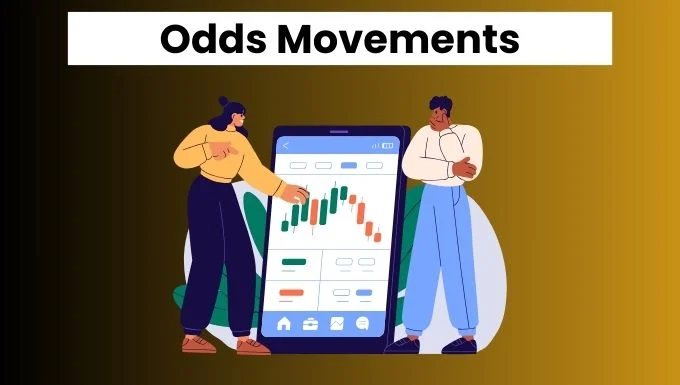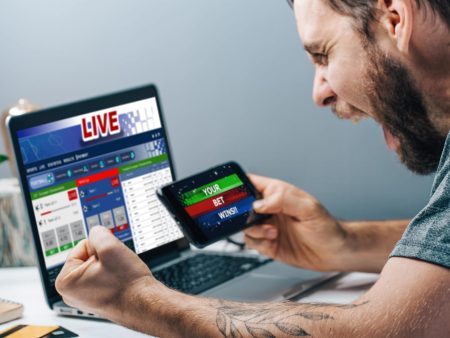
Dynamic Odds and Market Behavior
Bookmakers adjust odds based on market demand during significant sporting events. Underdogs are often assigned exaggerated odds, which might make their chances of winning seem improbably low, while the favorites are attributed with compressed odds, appearing deceptively safe. This manipulation of odds serves to sway the betting public, who tend to gravitate towards what they perceive as less risky bets.
Most casual bettors rely on gut feelings rather than analytical decision-making, choosing the lower odds that seem to promise higher safety. This behavior is especially prevalent during live events, where odds are continuously updated in response to unfolding match dynamics. Unlike average punters, seasoned bettors consider a wider range of factors, including historical head-to-head statistics, and are thus more adept at exploiting both safe and risky odds to maximize potential returns.
Strategic Considerations in Gambling
Opting for lower odds might seem logical because it appears safer. However, bookmakers, with their extensive experience and insight, may offer enticingly high odds on less likely outcomes as a strategy to balance their books. The real advantage lies in recognizing when bookmakers are vulnerable, such as during pre-match settings where the outcome is highly uncertain, and odds are initially set high.
To safeguard against losses and ensure profitability, bookmakers implement a commission on the odds, which also reflects an online betting company’s ability to payout winnings. This setup explains the variability in odds during a live match, impacting betting behavior as the game progresses.
The Impact of Technology and Live Data on Betting
Advancements in technology have revolutionized betting habits, empowering punters who embrace these tools with a significant edge. Live streaming features, providing real-time data on possession, shots on target, player injuries, and more, enhance informed decision-making. Such access to detailed game metrics has notably improved the success rate for those who use this information effectively, pushing their winning odds above 50%.
In the realm of betting, numerical data often speaks louder than the odds themselves. However, relying strictly on numbers can sometimes obscure judgment, leading to rigid betting strategies that follow popular trends rather than informed decisions. The key to selecting the most advantageous odds lies in how well one interprets and utilizes the available information.
Navigating Choices in Betting
In betting, there are no absolutely right or wrong choices—only the outcomes of one’s decisions. To succeed, bettors must cultivate a deep understanding of odds movements and market behaviors. By gaining this knowledge, they can make more informed choices, ultimately influencing their success rate in the volatile world of sports betting.
Dynamics of Odds Changes in Sports Betting
Mechanics Behind Odds Adjustments
Bookmakers base the changes in odds not just on the volume of bets placed, but also on other factors like competitor odds and broader internet sources. These adjustments are also strategically tailored to align with marketing strategies of online betting platforms that aim to attract bettors by offering boosted odds on popular events.
Understanding the derivation of odds, especially in widely-followed leagues, becomes clearer through the visibility of crowd influence. During live events, odds can shift rapidly in response to real-time updates on match statistics. However, for pre-match bets, odds setting can sometimes seem arbitrary, as bookmakers may set initial odds without full knowledge of potential outcomes, aiming to attract bettors.
In these scenarios, the volume of bets significantly influences whether odds rise or fall during the event. Early bettors might benefit from more favorable odds before subsequent adjustments are made based on the collective betting trends. The rigidity of odds largely depends on whether a significant portion of the betting community shifts their view on the likely outcomes, deviating from initial trends.
Volatility and Market Influence
The volatility of odds, driven by day-to-day fluctuations and the choices of the betting crowd, serves as a measure of pricing variability. Several factors contribute to this dynamic:
- High Roller Influence: When a major bookmaker sets odds, other bookmakers often mirror these odds, creating a standard across the market. This synchronization can sometimes lead to universal odds for specific events.
- Bookmaker Manipulations: Bookies may alter odds to encourage betting, either by enhancing pre-match odds or adjusting them during live streams. Such market manipulations aim to direct betting behavior in specific directions, based on perceived or real trends.
Despite the fluid nature of betting markets, bookmakers are typically accurate in their odds setting, with errors being uncommon. However, when miscalculations occur, bookmakers may void bets or freeze markets to recalibrate and avoid significant losses.
Capitalizing on Odds Movement
Understanding how odds are set and manipulated allows savvy punters to identify value bets and anticipate outcomes more effectively. Experienced bettors leverage their knowledge of past events and statistical analysis to make informed decisions that can capitalize on these odds movements.
By staying informed about how odds are influenced—whether by high stakes bets, crowd behavior, or bookmaker strategies—bettors can navigate the complexities of sports betting more proficiently. This knowledge not only helps in choosing the right moments to place bets but also in avoiding the pitfalls of following market trends blindly.
Ultimately, the key to successful betting lies in a thorough understanding of odds dynamics and a strategic approach to leveraging this knowledge for optimal payouts. Recognizing and reacting to odds changes can provide a significant advantage in the highly competitive and often unpredictable world of sports betting.







